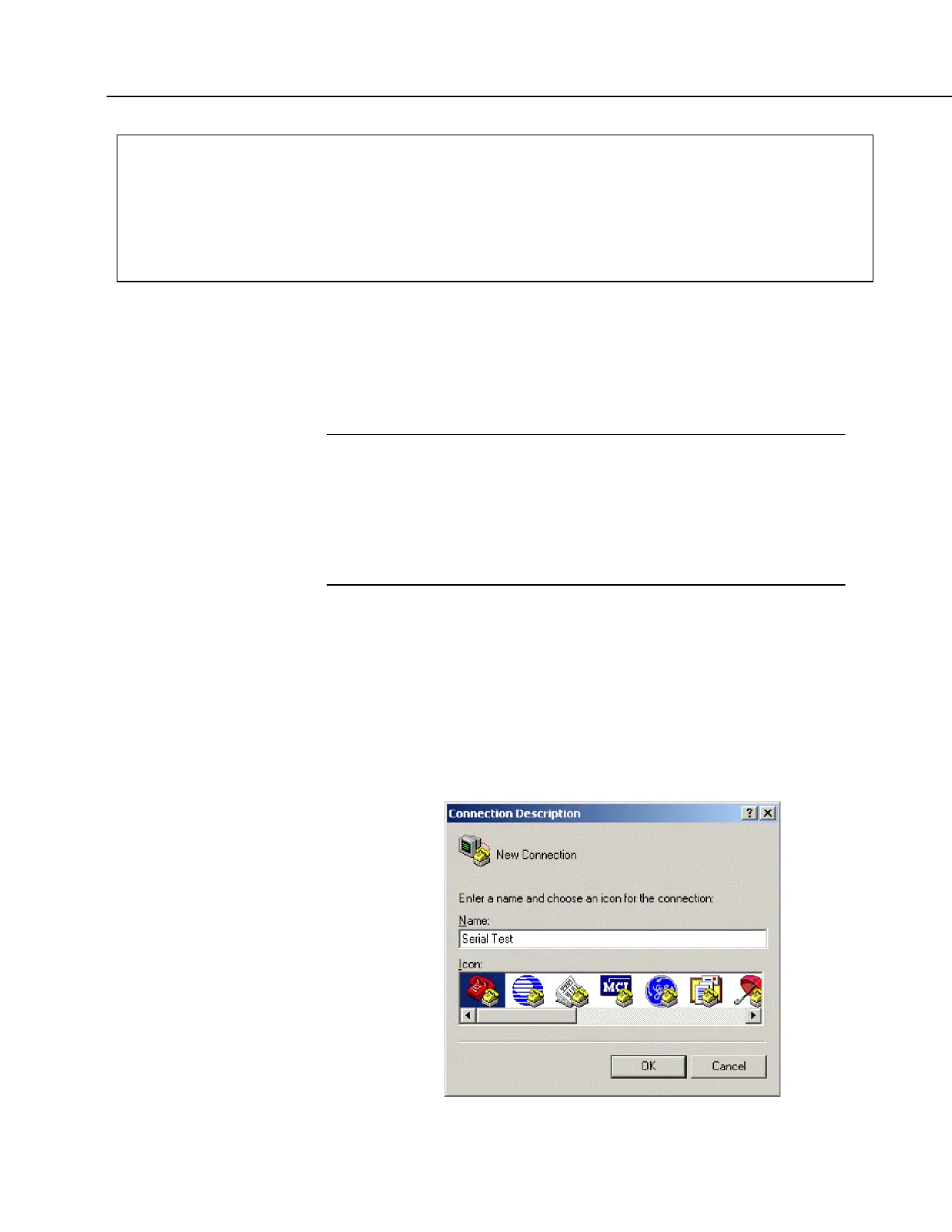Section 7. Installation
'Receive serial data as a string
'42 is ASCII code for "*", 35 is code for "#"
SerialInRecord(Com2,SerialInString,42,0,35,"",01)
'Parse the serial string
SplitStr(InStringSplit(),SerialInString,"",2,0)
NextScan
7.7.17.6 Serial I/O Application Testing
A common problem when developing a serial I/O application is the lack of an
immediately available serial device with which to develop and test programs.
Using HyperTerminal, a developer can simulate the output of a serial device or
capture serial input.
Note HyperTerminal is provided as a utility with Windows XP and earlier
versions of Windows. HyperTerminal is not provided with later versions
of Windows, but can be purchased separately from
http://www.hilgraeve.com. HyperTerminal automatically converts binary
data to ASCII on the screen. Binary data can be captured, saved to a file,
and then viewed with a hexadecimal editor. Other terminal emulators are
available from third-party vendors that facilitate capture of binary or
hexadecimal data.
7.7.17.6.1 Configure HyperTerminal
Create a HyperTerminal instance file by clicking Start | All Programs |
Accessories | Communications | HyperTerminal. The windows in the figures
HyperTerminal Connection Description
(p. 292) through HyperTerminal ASCII
Setup
(p. 294) are presented. Enter an instance name and click OK.
FIGURE 68: HyperTerminal New
Connection Description

